Video Games & Technology
Is Disney now ready to really step up its game when it comes to videogames?
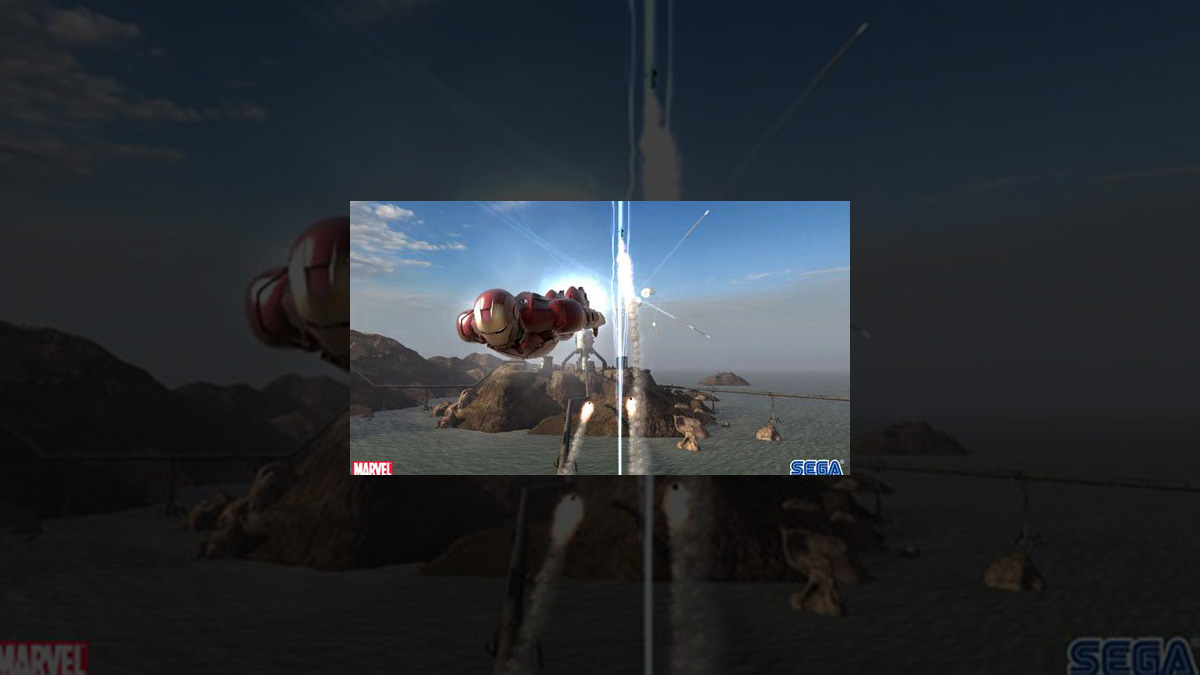
With “Marvel’s The Avengers” having sold a billion dollars worth of tickets worldwide after just 19 days in theaters, the ripple effect that this Joss Whedon film is causing will be felt for years yet to come. Children will grow up dreaming of robot suits and flying aircraft carriers, some will undoubtedly be the next generation of visual effects artists, engineers and programmers. Toys, cartoons and action figures will all get a boost this summer and holiday season. Parents and kids alike will enjoy dressing as their favorite Avenger come Halloween and let’s not even talk about how good Christmas is going to be for kids! Disney and Marvel shareholders will possibly the happiest from the performance of the Avengers. Despite the fantastic licensing deals that Marvel and Disney have hammered out there has been one market that both studios have traditionally failed critically at. Neither studio seems capable of releasing a great high profile tie-in videogame for any of their franchises.
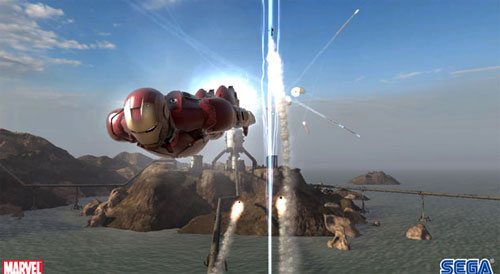
Game players often hold their noses when they learn that a new Disney or
Marvel movie is being ported over to the gaming consoles and PC. They
may be huge fans of the films or the comics they are based on but when
it comes to videogames they can smell a sorry rush to market from a mile
away. The licensed titles fail to live up to the expectations,
especially since they have the Disney and Marvel name attached to them.
These games often seem to be the result of marketing data, poor
investment and lackluster planning. The Disney / Pixar / Marvel (let’s
call the collective DPM) games often make a predictable return from the
market but are never blockbusters like the Triple-A titles from other
publishers. The biggest obstacle for developers working with the Disney
or Marvel license seems to be in trying to make a gaming experience run
parallel with a story from a film.
The aggregate scoring site Metacritic shows that trend is
nothing new for the licensed DPM games. Metacritic has a scale from 1 to
100 for professional critics and a scale from 1 to 10 from consumers.
The higher the score the better the reception and the more money the
title traditionally makes. Among editors and players the “average”
gaming experience is not set at a score of 50. That would actually be
considered a very poor title. The average experience would rate between
65 and 70, then move to above average, good and great territory
respectively. The consoles that the games are released on can influence
the ratings. Some games have console exclusive content while others drop
in quality from platform to platform. Let’s take a look at the recent
crop of games from the DPM collective and see if we can spot a trend,
we’ll begin with Pixar.
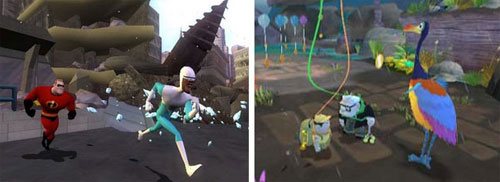
The Incredibles was published in 2004 for the PC, Microsoft
Xbox, Sony Playstation 2 and Nintendo Gamecube. A year later a sequel
was released called the Rise of the Underminer. The two games averaged
65 on the Metacritic scale, barely average and nothing that gamers would
be interested in. The original game tried to follow the narrative and
pacing from the film while the sequel had a little more leeway in terms
of gameplay and plot. The same thing could be said of the 2009 game
based on the film Up. The game rated at 65 on Metacritic whereas the
movie was rated at 88. In 2010 Toy Story 3 was released on multiple
consoles and PC’s as well but had a much better average than previous
Pixar games. Metacritic rated it at around 76 out of 100. The game did
not try to turn the narrative of the film into a series of episodic
level designs but instead introduced the more popular “sandbox” style of
game play. Audiences chose how they wanted to play and with which
characters from the franchise they wanted to play with. Objectives could
be selected by players in no particular order. This freedom from the
plot and pre-determined game paths made the Toy Story 3 series appeal to
a broader game playing audience.
Disney had a track record that was more questionable among gamers. Most of the videogames released by the studio had been lackluster in years past. Recently their in-house developers Disney Interactive / Buena Vista Games and Junction Point have been trying to reverse the trend. The Princess and the Frog was a collection of party-style mini games designed for multiple players. It was exclusive to the Nintendo Wii and the handheld Nintendo DS. The 2009 title did not make many waves among players but the average of 70 out of 100 was decent showing for Disney. The following title was not as well received. Tangled released in 2010 also had a collection of mini games but the Nintendo console exclusive averaged around 63 on Metacritic. The following title would earn Disney some redemption but it was not the blockbuster that audiences had hoped for. Epic Mickey, also released in 2010 was a Wii exclusive title. The game was designed to be a re-introduction of sorts for Mickey Mouse and Oswald the Rabbit to audiences. The level of detail that went into the game was amazing as producer Warren Spector was a certifiable Disney fanatic. However audiences felt the control and game play were lacking and that disappointment was reflected in the review scores. Metacritic held the game to 73 out of 100. It appeared that even the biggest name was not enough to move copies of any game One of the most popular Disney games was not based on a cartoon or film and did not feature any mascot characters. The 2005 PC title Toontown Online allowed players to assume the roles of cartoon characters fighting against evil robots known as Cogs. Certainly there is a larger theme with cartoon characters fighting against corporate monsters trying to take over Toon Town, but I digress. The multiplayer title was rated as 81 on Metacritic. To prove the staying power there are still players enjoying this title seven years later on Disney’s Go site.
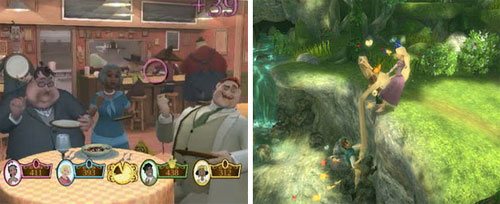
Of the DPM collective Marvel has the poorest track record. Most games based on comic books are poorly done and none seem to be worse than those based on Marvel titles. There are a few exceptions, the Ultimate Alliance and Spider-Man games have been better than average but the rest of the universe is sorely lacking. Consider the games based on the core members of the Avengers. The game based on the Incredible Hulk reboot featuring Ed Norton was released on the “next-gen” consoles, the Xbox 360 and PS3 in 2008. The game did feature graphics that were better than any previous Marvel game. The title received a dismal 55 from Metacritic. That same year the Iron Man game based on the Robert Downey Jr. version of the character was released for the same consoles. It was rated in the low 40’s. Iron Man 2 was released in 2010 and did not average any higher scores. Marvel was making a name for itself on the big screen but couldn’t manage to draw out the same response for the licensed videogames. It did not matter if the games featured the likeness or voices of the stars from the movies. The great visuals and star power did nothing to compensate for poor game design and terrible controls. The lowest rated of the recent Marvel games was Thor: God of Thunder. Released in 2011 for the consoles it managed to score in the high 30’s. Marvel rebounded when they released Captain America later that year. The super soldier game scored a 60, breaking the trend from the developers at Sega which had been holding onto the Marvel license for years.
Audiences had long lamented the lack of quality games featuring popular comic book characters. The studios only seemed interested in the heroes when there was a movie tie-in. The games based on movies based on comic books were nearly all pitiful experiences. Audiences began demanding better experiences and every so often the license holder would step up and deliver a worthy game. The budgets and development cycle would go up for the better comic book to game experiences. The studios would sometimes consult actual comic book writers and artists during the production of the titles and avoid any movie tie-ins altogether. When studios were free to develop a game that played to the strengths of the characters without being rushed to have a game ready in time for a film debut then the experience was nothing short of amazing. For example, the previous Incredible Hulk game, Ultimate Destruction was one of the best comic book games ever produced. Rated at 83 on Metacritic the title was released for the Playstation 2, Gamecube and Xbox. It did not feature the likenesses of any actors nor did it rely on any big name voice talent. Instead the game focused on the character and a variation of his his comic book struggles. Players could leap great distances, throw tanks and pull aircraft out of the sky, these were things that no other game character offered. Audiences loved the title but were put off by the follow-up. The Ed Norton version had better graphics but worse control and game play. A different development team had taken over and the production cycle had been shortened to meet the release of the movie. Players passed on the title and Marvel and Sega did not see the profits they had anticipated.
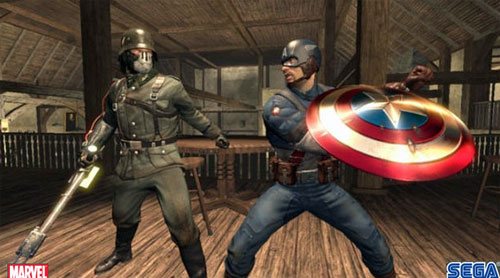
Marvel was not the only studio struggling to bring comic book properties to the gamers. Warner Bros. had released some of the worst comic book character games of all time. Superman 64 for the Nintendo 64 was constantly brought up by gaming media as one of the worst, if not the worst game ever made. The Christopher Nolan reboot of the Batman franchise was good for the studio but the game tied into the movie was average at best. Batman Begins, released 2005 for the PS2, Xbox and GameCube averaged 65 on Metacritic. The locations featured in the game were careful reproductions of the world presented in the film yet the experience was lacking. A few years later WB struck gold with Batman Arkham Asylum. The game was released in 2009 for the PS3 and Xbox 360. It was a critical and commercial success, earning a 92 rating. The Batman presented had nothing to do with the recent films or even current comic book stories but like the Hulk in Ultimate Destruction, the developers managed to create an original game experience based on the unique abilities of the character. The game proved so successful that WB pushed the developer Rocksteady to begin work on a sequel while they were hammering out licenses for toys and products with Arkham version of the character. The sequel debuted in 2011, it expanded on the game elements and introduced a more expansive “sandbox” environment for players to enjoy. Released for the same consoles Batman Arkham City was rated even higher, earning a 95 on Metacritic. Many critics and players considered it the game of the year for 2011. As of Feb 2012 there have been 6 million units of Batman Arkham City shipped, the majority of those sold. Assuming that people paid the MSRP of $49.99 per copy then WB was looking at almost $300 million in sales. These figures would not include the sales data for the downloadable content (DLC) packs which offered new characters and costumes for a small fee. The $3M number also does not include resell or rental estimates.
Warner Bros. discovered that the videogame could be an important part of the revenue stream if it were approached properly. The lesson here was fairly straightforward. WB did not t did not try to adapt a film into a gaming experience. They also did not treat the fans of their comic book characters like simpletons. Players expected a certain level of control, design and polish with their gaming experience anything less would be ignored. Batman in a party game would have never broken the $100M barrier, no matter how the marketing data might lead an executive to believe. Great experiences require time, money, resources and the right approach. There is no shortcut to making a tripe-A title and reaping the rewards. WB did not limit the game to one console either. They got Rocksteady to provide exclusive content for both the PS3 and Xbox 360 and in many instances convinced gamers that it was worth it to buy the same game twice. To put things in perspective the Avengers broke box office records to the tune of $200M in the USA by getting a large amount of viewers to pay roughly $10 a ticket. Batman Arkham City sold 2 Million units when it debuted, which doesn’t sound impressive but at $50-a-game that’s $100M almost overnight and over a quarter billion dollars to-date.
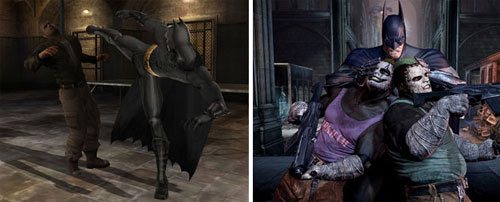
Perhaps the success of Arkham City has given Disney reason to rethink their videogame strategy? Disney, Pixar and Marvel have a catalog of characters that could eclipse any other studio, including Warner Bros. What they seem to lack is the a better understanding of the gaming consumer. According to the Entertainment Software Association the average age of the game player and consumer is closer to 40 than 14! The people buying the games are doing so more for themselves that for their children. The younger generation is interested in different pursuits such as social media more than gaming. It would be wise for Disney to stop trying to push every film release with a simplistic party game targeted for children and instead focus the efforts on the actual gaming community. Instead of farming out licenses to the highest-bidding developers the studio should reinvest in Disney Interactive, Junction Point (which has suffered from layoffs) and Buena Vista Games. It takes top-level talent to make top-level games, it also takes time, money and resources. The same rules that govern great animated features apply to the game industry, who knew? The focus from the parent company should not be in trying to get a game to the market in time for a movie premier, instead it should be how the characters could work apart from the film. For example if the story and characters in Brave aren’t quite a fit for a videogame then Disney and Pixar should reconsider spending the time, money and resources to develop it. What does Merida, the star of Brave, offer gamers that they haven’t seen before? The Incredible Hulk could throw tanks and pull jet fighters out of the sky, Batman could fight, use stealth and gadgets to take out hordes of criminals. These things were unique to gaming and when approached properly in terms of control, level design and graphics both characters made for fantastic playing experiences (and very profitable titles). The linear gameplay of Brave and proposed bow and arrow combat seems limited, especially when compared to the more robust God of War and Assassin’s Creed titles on the horizon.
Perhaps Bob Iger, Warren Spector and the other the decision makers have already come to that realization. Wreck-It Ralph, the next Disney CGI feature is based entirely around gaming. According to early reports the project is a love letter of sorts to the entire gaming genre. It will even feature cameos from some of the biggest heroes and villains from the industry, not unlike a Who Framed Roger Rabbit for the gaming generation. On the virtual front Disney is breaking from tradition. The sequel to Epic Mickey is not going to be exclusive to the Nintendo platforms. The Xbox 360 and Playstation 3 will also get simultaneous releases this holiday season, thus ensuring that more gamers get a chance to experience the title this time around. Even the games on Disney’s websites have become more polished as of late, as the Drive: Motor City could attest to. Hopefully Pixar and Marvel might rethink their gaming strategy as well, there is no reason why those studios could not be sitting on the next Arkham-sized blockbuster.
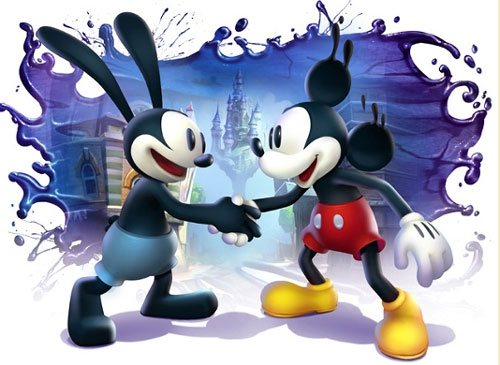
Video Games & Technology
“Adventure Time: Pirates of the Enchiridion” game coming this summer
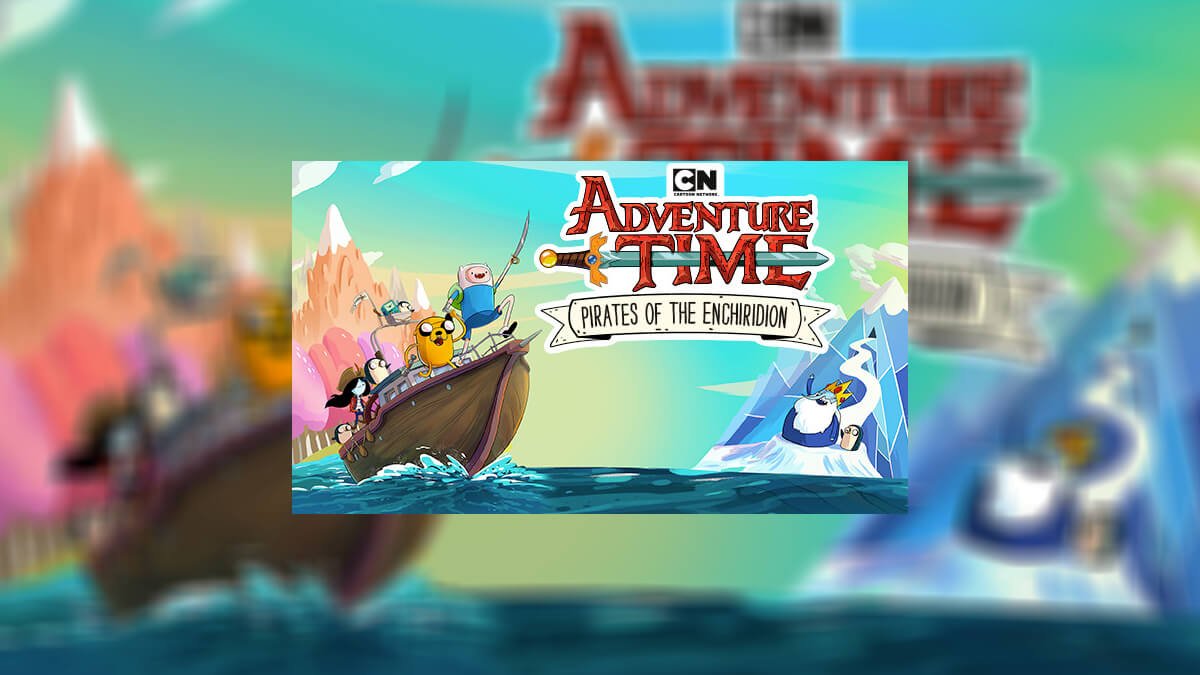
“C’mon on, grab your friends … ” A new Adventure Time game is coming out across multiple platforms.
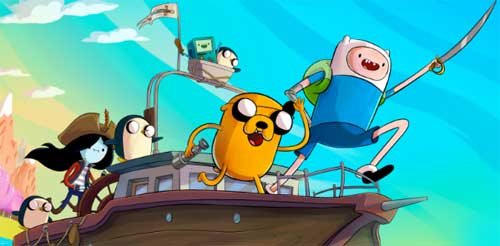 Copyright Cartoon Network / Outright Games Ltd. All rights reserved
Copyright Cartoon Network / Outright Games Ltd. All rights reserved
In this open world game, Finn and Jake will be sailing on a raft (Named Jeff) through the flooded land of Ooo to solve the mystery of why water engulfed their home and to help others & get in hijinks along the way. With a ragtag gang of friends (From a vampire, to an Ice King, to a little robot) Finn and Jake will travel from the melting Ice Kingdom to the Fire Kingdom and fight in turn-based combat like an RPG.
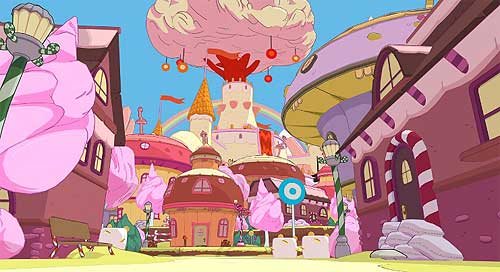 Copyright Cartoon Network / Outright Games Ltd. All rights reserved
Copyright Cartoon Network / Outright Games Ltd. All rights reserved
The trailer shows off some absolutely gorgeous character models and environments. I’m particularly enchanted by the gorgeous Candy Kingdom that’s briefly shown in this footage. The art design sticks close to the show, but brings with it a soft, sweet design rarely seen in adventure games. Which is a refreshing thing to bring to the table. Likewise, it’s a joy to see the characters translate to 3D so well. Outright Games has done some fantastic work here with their art design.
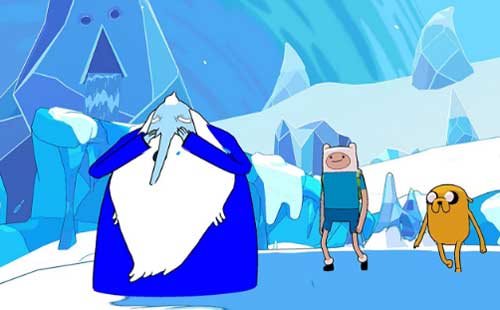 Copyright Cartoon Network / Outright Games Ltd. All rights reserved
Copyright Cartoon Network / Outright Games Ltd. All rights reserved
Likewise, the voice cast for the show will be reprising their roles as characters in the land of Ooo. And they’ll have a lot of lines to record. Not only can you control Finn and Jake, but you’ll be able to play as BMO and Marceline as well. You can upgrade these characters to unlock unique abilities for combat and the map holds plenty of fun mysteries too. With side stories and secret locations, this seems like a game that’ll have hours & hours of fun.
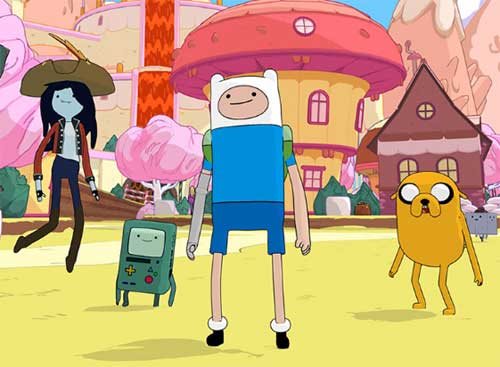 Copyright Cartoon Network / Outright Games Ltd. All rights reserved
Copyright Cartoon Network / Outright Games Ltd. All rights reserved
What strikes me particularly about this game is how much it resembles Legend of Zelda: Wind Waker. This is no coincidence. Adventure Time have a history of being direct corollaries to Legend of Zelda games. “Adventure Time: Hey Ice King! Why’d You Steal Our Garbage?!” ‘s gameplay references “Zelda II: The Adventure of Link” and “Adventure Time: The Secret of the Nameless Kingdom” has the same top down look & combat stylings as “Legend of Zelda: A Link to the Past.” With this in mind, it’s absolutely delightful to see a Wind Waker homage with a series like this. Wind Waker was a gamechanger for the Legend of Zelda series, and it feels like “Pirates of the Enchiridion” will be a gamechanger for the Adventure Time games.
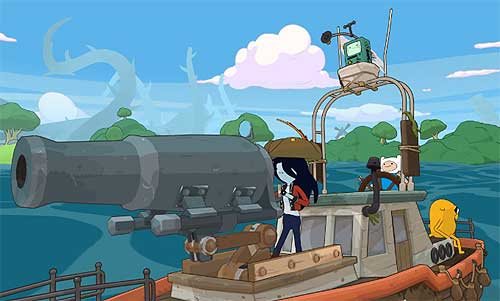 Copyright Cartoon Network / Outright Games Ltd. All rights reserved
Copyright Cartoon Network / Outright Games Ltd. All rights reserved
‘Adventure Time: Pirates of the Enchiridion’ will be out July 17th for the Nintendo Switch, Xbox One, Playstation 4, and PC.
Video Games & Technology
Do you like treasure hunting and/or cooking soup? Then Pokemon Quest is the game for you
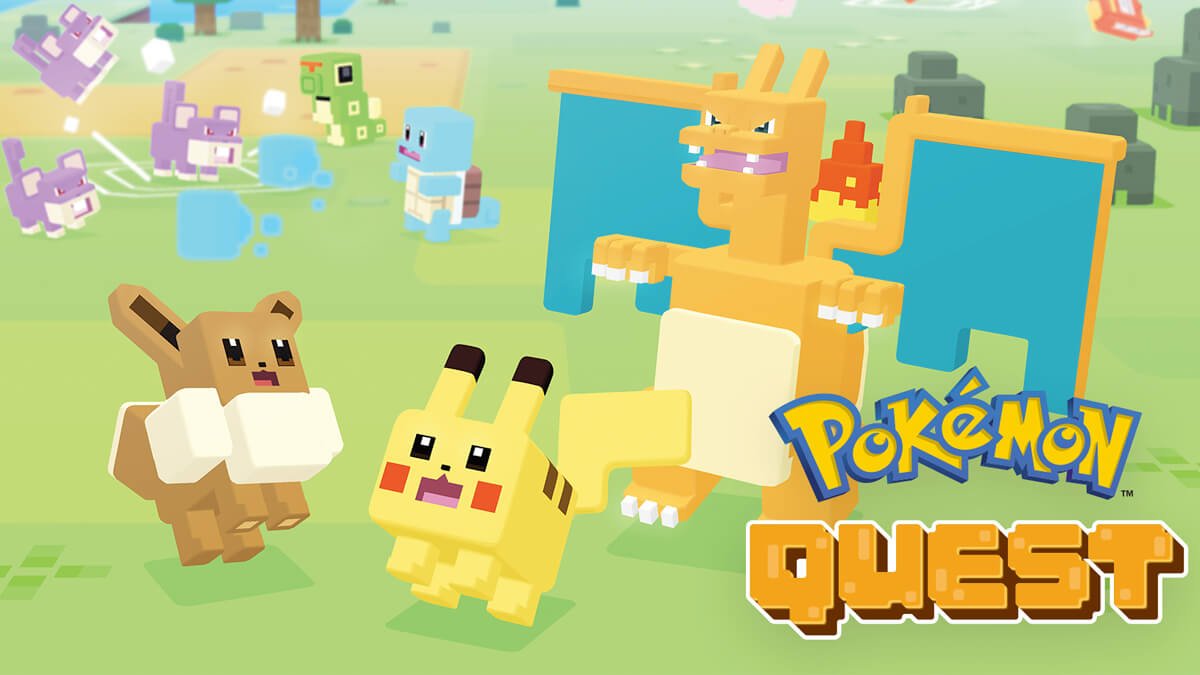
Immediately after the Pokemon press conference on May 29th, the mobile-switch cross platform game Pokemon Quest was available to download on the Nintendo eShop (with the mobile device version debuting later this month). Curious about the ‘Free-to-Start’ game, I snagged a download and started playing.
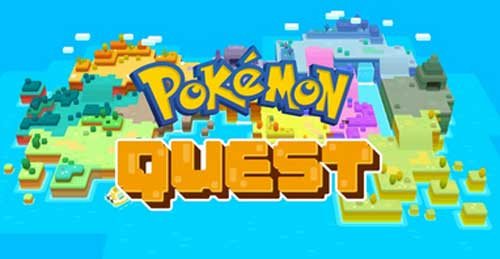 Copyright 2018 Nintendo. All rights reserved
Copyright 2018 Nintendo. All rights reserved
Pokemon Quest is a game that feels best letting itself auto-run. You check in several times a day to see what Pokemon have appeared at your camp (The conceit behind this game is that you’re a treasure hunter & Pokemon flock to you to fight their brethren in your honor. They also sometimes just come by because you make really good soup. What can I say?). With the Pokemon at your disposal, you build a small exploration team much in the same style as the Pokemon Mystery Dungeon game series. And you then set them out to fight other Pokemon in open levels. From these battles, you win power stones (which allow you to upgrade your Pokemon’s health & attack power), and ingredients to lure other Pokemon to your camp.
You may’ve taken notice use of the term ‘Free-to-Start’ earlier in this article. That’s because — like many mobile services — this game offers add-ons for purchase. I don’t see any age limit on the Nintendo Switch version to take away ads for purchases (which many mobile games have chosen to add. See Disney’s own ‘Disney Crossy Road’) but the Pokemon Company may be expecting parents to set their own controls over the switch with the parental controls available on the system.
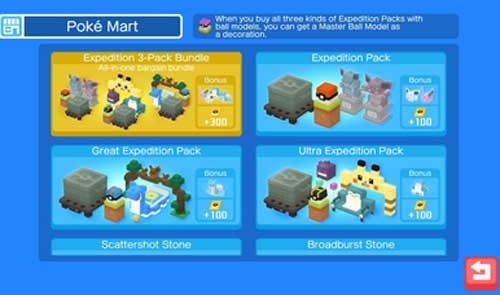 Copyright 2018 Nintendo. All rights reserved
Copyright 2018 Nintendo. All rights reserved
Still, the game is typical in mobile game fare for trying to wring money out of players. Energy to play the game costs P tickets, which you can earn 50 a day … or you can just buy. The game gives you an amount to start with, shows you how to use them to speed up your game, and then takes you to the shop where you can see an advertisement to buy it — along with Pokemon furniture to help your team.
These packages can go up to $30 and include Pokemon in-game items & exclusive furniture. And while Pokemon Go offered items in bundles like this, it’s still odd to see in a Pokemon game — let alone a Pokemon game on the Nintendo Switch (albeit, this is a cross-platform game). The game itself doesn’t seem to have any sort of hard-pay line for gameplay, though. I’m up to the fifth world in my game without making any purchases. And while the game difficulty has dramatically ramped up, likely to encourage purchases, it’s still completely manageable to play without paying.
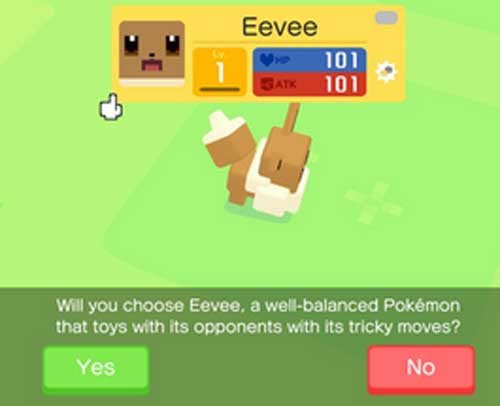 Copyright 2018 Nintendo. All rights reserved
Copyright 2018 Nintendo. All rights reserved
In that sense, for a free game, it’s really cute & enjoyable. The graphics are pleasing and colorful. And if you return to camp, you’ll find all the Pokemon you’ve befriended hopping around adorable decorations. Sometimes stacking on top of each other, other times following each other around in what seems like games of tag.
The ‘cooking’ mechanic to encounter a random Pokemon makes encountering them feel less like gambling and more like strategy. By cooking certain recipes from materials you find on missions, you can draw certain types of Pokemon to your camp. Cooking in certain pots (unlocked by playing through the game) can draw higher powered Pokemon at the cost of more materials. And waiting while your energy fills up means running out of ingredients (At the point of the game I’m at, about half-way through) doesn’t seem to be a problem.
 Copyright 2018 Nintendo. All rights reserved
Copyright 2018 Nintendo. All rights reserved
All in all, I’d say, if you have access to this game, check it out and see if it’s for you. There doesn’t seem to be cross platform support for other Pokemon games. But as a standalone, it’s a cute, fun blip of a game. The hard ‘end’ of the levels within surprises me, especially since it seems to end with 150 Pokemon (out of the over eight hundred available). So I’m not sure what there is to get out of it when you get to the end level outside of getting every Pokemon. But it’s still a fun, very casual strategy game. Just keep an eye on purchases if your children decide to play.
Video Games & Technology
“Pokemon — Let’s Go, Pikachu !” & “Pokemon — Let’s Go, Eevee !” to come to the Nintendo Switch this year
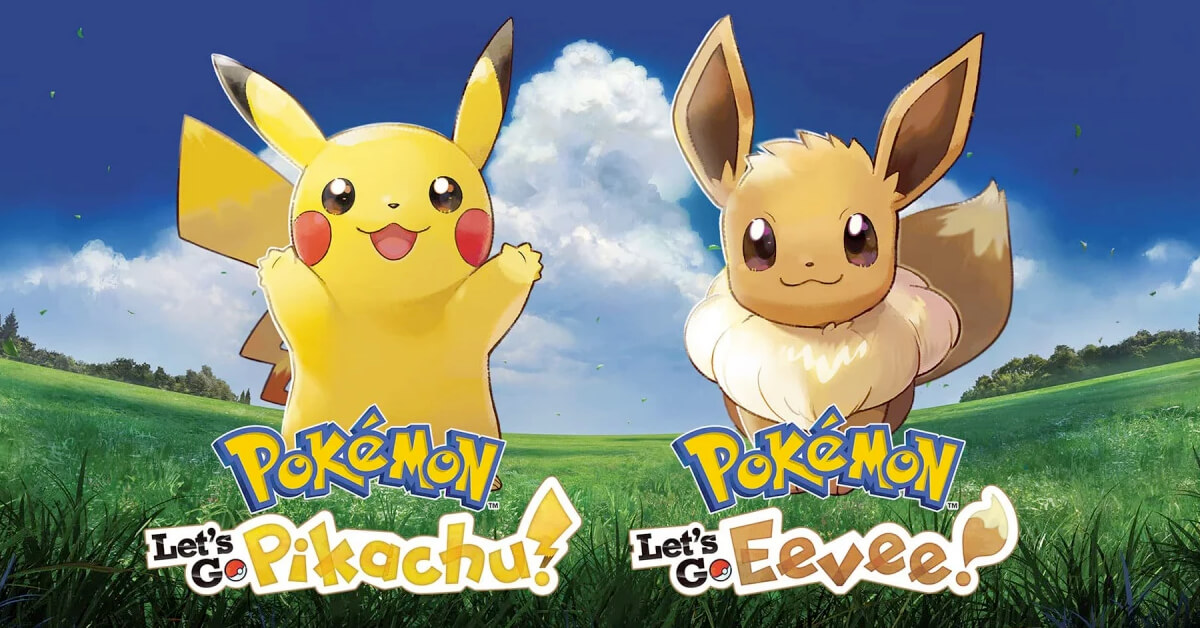
During a conference in Japan earlier this week, the Pokemon Company revealed three new games : A mobile and Nintendo Switch cross platform game, “Pokemon Quest,” with graphics similar to Crossy Road and some absolutely adorable furniture in a “free to start” format; and for the Nintendo Switch, “Pokemon — Let’s Go, Pikachu !” and “Pokemon — Let’s Go, Eevee !”
Taking inspiration from gameplay styles from the popular “Pokemon Go” for mobile devices, “Pokemon — Let’s Go, Pikachu !” and “Pokemon — Let’s Go, Eevee !’ adopts the thrown Pokeball system. By using one controller with the Switch system, you can make a tossing motion to throw a Pokeball and capture a cute critter for your team.
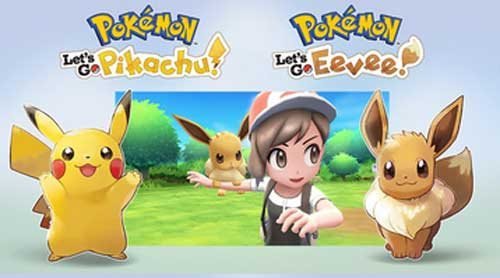
Additionally, you can buy the “Pokeball Plus” accessory to act as an additional “Joy-con” controller for your Switch to capture Pokemon. Then load a Pokemon into your pokeball, and take it out on the go.
From there, with the accessory, you’ll be able to interact with the Pokemon you have inside. Although current information doesn’t offer whether we’ll have more options than putting Eevee or Pikachu in the Pokeball Plus, the footage seen in the linked trailer is absolutely adorable.
The game itself seems to be a remake of Pokemon Yellow, a game released twenty years ago for the Game Boy Color. You explore the Kanto Pokemon region, and seem to be limited to the 150 Pokemon available when that game was out (Well, 151, if you were lucky, or good at exploiting glitches). But these games ditch the random encounters of mainline Pokemon games and adopt the overworld encounters of Pokemon Go. What Pokemon you see on the overworld is what you get.
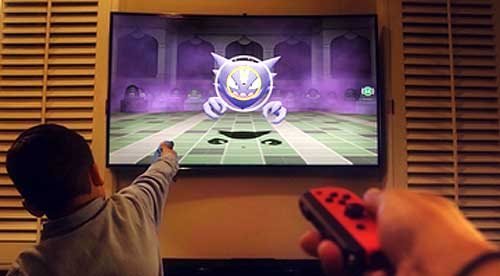
Additionally, Pokemon can follow you around and you can ride some of them. In footage, we see a trainer riding a giant Onyx (i.e., a giant snake made out of rocks. Who wouldn’t be comfortable riding on that?) and followed by a starting Pokemon, Bulbasaur. Although in these two games, you start instead with the series mascot Pikachu, and the evolution Pokemon Eevee, which can evolve into several different pokemon. You can also put little outfits on them. Which is – frankly — incredible.
Likewise, this seems to have local multiplayer. Hand the left Joy-con to a friend and let them enter your game. Or if you’re feeling really lonely, put the left Joy-con in your hand and pretend you have a friend while controlling the new trainer that arrives. What a fun time!
You and your friend can then team up to capture Pokemon together, or go exploring together- And you can have Pokemon you capture in Pokemon Go (of the original 151 Pokemon) arrive in your game. You can also send “Presents” back to your Pokemon Go game, including a possible new form of Pokemon as the trailer discusses.
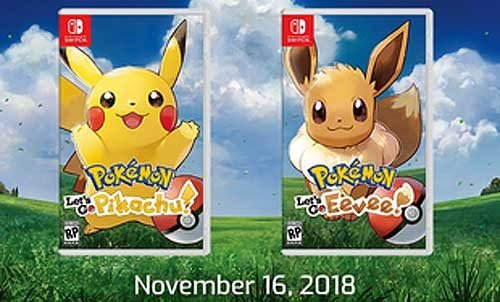
“Pokemon — Let’s Go, Pikachu !” and “Pokemon — Let’s Go, Eevee !” will be arriving on the Nintendo Switch this November. Likewise, a new Pokemon game will be released in the second Half of 2019. With a Mario movie in development and theme park additions on the way, it’s sure to be a busy year for Nintendo.
-

 History10 months ago
History10 months agoThe Evolution and History of Mickey’s ToonTown
-

 History11 months ago
History11 months agoUnpacking the History of the Pixar Place Hotel
-

 History11 months ago
History11 months agoFrom Birthday Wishes to Toontown Dreams: How Toontown Came to Be
-

 Film & Movies8 months ago
Film & Movies8 months agoHow Disney’s “Bambi” led to the creation of Smokey Bear
-

 News & Press Releases10 months ago
News & Press Releases10 months agoNew Updates and Exclusive Content from Jim Hill Media: Disney, Universal, and More
-

 Merchandise8 months ago
Merchandise8 months agoIntroducing “I Want That Too” – The Ultimate Disney Merchandise Podcast
-

 Theme Parks & Themed Entertainment3 months ago
Theme Parks & Themed Entertainment3 months agoDisney’s Forgotten Halloween Event: The Original Little Monsters on Main Street
-

 Film & Movies3 months ago
Film & Movies3 months agoHow “An American Tail” Led to Disney’s “Hocus Pocus”








